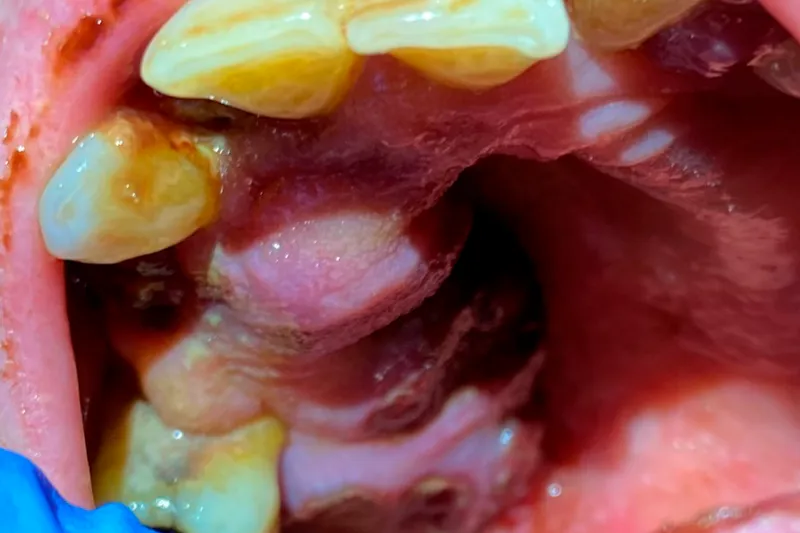HIV-induceret Kaposis sarkom efter mistanke om mundhulecancer
Fund af malignitetssuspekte læsioner i mundhulen kan i sjældne tilfælde være første tegn på en ikke diagnosticeret HIV-infektion. En tidlig diagnose af Kaposis sarkom og en eventuel underliggende HIV-infektion er essentielt for behandlingsmuligheder og prognosen.

Baggrund
– Kaposis sarkom er en sjælden cancerform i Danmark, som ofte præsenterer sig som rødviolette makulære læsioner i huden, men som også kan udvikles i slimhinder. Orale læsioner forekommer især ved den epidemiske (HIV/AIDS-associerede) type af Kaposis sarkom, men hyppigheden har været faldende grundet introduktionen af antiretroviral behandling.
Patienttilfælde
– En 53-årig kvinde henvises fra privatpraktiserende tandlæge til øre-næse-halskirurgisk afdeling på grund af stor tumorlignende proces i ganen. PET-CT-scanning viste en tumor i ganen samt i venstre tonsil, og ved hjælp af biopsi stilles diagnosen Kaposis sarkom. Patienten blev efterfølgende fundet HIV-positiv.
Konklusion
– Fund af malignitetssuspekte læsioner i mundhulen kan i sjældne tilfælde være første tegn på en ikke diagnosticeret HIV-infektion. En tidlig diagnose af Kaposis sarkom og en eventuel underliggende HIV-infektion er essentielt for behandlingsmuligheder og prognosen.
Klinisk relevans:
Ved fund af malignitetssuspekte læsioner i mundhulen må en sjælden tilstand som Kaposis sarkom mistænkes og lede opmærksomheden hen på, om patienten kunne være HIV-positiv. Derved kan denne kasuistik øge fokus på hurtigere diagnostik og behandling af HIV.HIV Induced kaposi sarcoma diagnosed after oral cancer suspicion
Background
– In Denmark Kaposi sarcoma is a rare type of cancer, which often manifests as pink-purple maculopapular cutaneous lesions, although it can also be developed in mucosa. Oral lesions particularly occur in patients with the epidemic (HIV/AIDS related) type of Kaposi sarcoma, but the frequency has been decreasing along with the introduction of antiretroviral treatment.
Case study
– A 53-year-old woman was referred from a private dentist to the Department of Otorhinolaryngology, due to a large malignant suspicious process in the hard palate. PET-CT scan showed tumour in the palate and in the left tonsil, and biopsies from both tumors diagnosed the patient with Kaposi sarcoma. The patient was subsequently diagnosed as HIV-positive.
Conclusion
– The discovery of malignant suspicious lesions may in rare cases be the first sign of an unidentified HIVinfection. Early diagnosis of Kaposi sarcoma and a possibly underlying HIV-infection is essential for the prognosis and opportunities for treatment.


